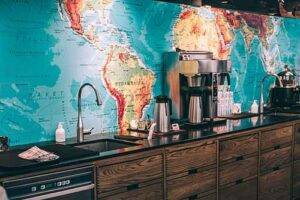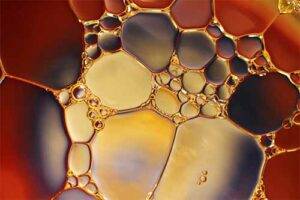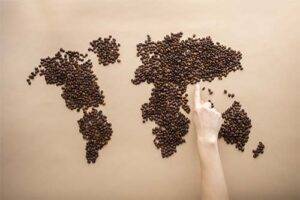
Why Invest in a Dedicated Coffee Grinder?
It’s important to understand the advantages of making a purchase of a specialised coffee grinder. Many of you will know about the significance of freshly

Today we’re going to talk about the perfect extraction on your espresso machine. This means getting the balance just right, neither over extracted and bitter tasting, or under extracted and sour tasting.
The rules we’re going to talk about today apply to all methods of brewing coffee, but this post will specifically relate to espresso extraction.
The grind size of your beans is one of the biggest influencers in extraction of any type of coffee. Grinding the beans fresh yourself, and adjusting the grind size manually will ensure a fantastic cup of coffee. A great, electric, well maintained burr grinder will ensure that you make great cups of coffee every time. We recommend a Eureka Mignon Oro. This is a top of the line burr grinder with 0 retention. It allows you to adjust the burrs so that they touch, which means you can go right down to turkish grind if need be. Your grinds will be consistent (all the same size) and you won’t lose grams of coffee inside the grinder each time you grind.
Grind size is important for espresso coffee because the size of the grind affects the rate at which water flows through the coffee grounds. A finer grind will result in a slower flow rate and a stronger, more concentrated espresso shot, while a coarser grind will result in a faster flow rate and a weaker, less concentrated shot. Additionally, the grind size must be consistent in order to ensure a consistent extraction and a well-balanced flavor in the final cup.
In coffee preparation, “extraction” refers to the process by which the soluble compounds in the coffee grounds are dissolved into the water to create the final beverage. The soluble compounds that are extracted include caffeine, acids, sugars, and other flavourful compounds that give coffee its unique taste and aroma. The ideal extraction is one in which the right balance of compounds is extracted from the coffee grounds to create a balanced, flavourful cup of coffee. Factors that affect extraction include grind size, water temperature, and brewing time.
Different brewing methods extract coffee in different ways. Espresso machines form a dense puck of finely ground coffee grinds and force water through it at high pressure. A plunger will enable coarsely ground coffee grinds to be immersed in water for a length of time. Any way you extract coffee will have different variables to control, and different outcomes. Different brew methods will also suit different types of coffee better.
Over-extracted coffee is a term used to describe coffee that has been brewed with too much contact time with the water, resulting in a bitter and overly strong cup of coffee. This occurs when the water is in contact with the coffee grounds for too long or when the grind is too fine. The over-extracted coffee will have a dark brown color, and a strong bitter taste, similar to that of dark chocolate or unsweetened cocoa. This is because during the over-extraction, the water dissolved a higher amount of bitter compounds from the coffee beans.
You will know you have over extracted your coffee by a few key points.
In an espresso machine there are a few reasons the water can take too long to make its way through the puck: You could have overloaded your basket, in which case the water has much more coffee to make its way through, and is therefore slower. You could also be grinding your coffee too fine; in this case there would be a lot more surface area in your coffee grinds, and the water will take much longer to get through them and sometimes they can even form a sand, and the water can’t make it through at all.
Under-extracted coffee is a term used to describe coffee that has been extracted for too short a time, resulting in a weak, sour, or salty taste. This occurs when the water is in contact with the coffee grounds for too little time, or when the grind is too coarse. Under-extraction can also happen if the water temperature is too low or if the brewing method does not allow for adequate contact time between the water and the coffee grounds. The under-extracted coffee will have a lighter brown color and a sour taste, similar to that of unripe fruit. The under-extraction means that not enough soluble compounds have been extracted from the coffee grounds, resulting in a less flavorful and less balanced cup.
You will know you have under extracted your coffee by observing a few key points.
In an espresso machine there are a few reasons why the water can get through the puck too easily: You could have under dosed your basket, which means there isn’t as much resistance and the water can move the grinds around inside the portafilter. This allows channeling to occur, and the water to make its way through the beans without extracting the necessary flavours. You could also be extracting your coffee too course, which means there is not as much surface area, and the water can fit through the gaps between the coffee grinds (think water through sand vs water through rocks).
Achieving the perfect extraction with an espresso machine requires a combination of factors to be dialed in correctly.
By properly adjusting these factors, you can achieve a balanced and flavorful espresso shot with a nice crema on top, which is the hallmark of the perfect extraction. Usually as a rule of thumb you’re aiming to get double the grams of coffee out that you put grinds into the portafilter. So for example, if you put 18 grams of coffee grinds into the portafilter basket, you’d be aiming to get 36 grams of coffee out into your cup. The perfect extraction for this ratio (1:2) is around 25 seconds. Any more than that and you’re venturing into over extracted territory and you’re going to have bitter notes hanging around. Any less than that and you’re heading into under extracted territory and are going to find sour tastes in your coffee.
You will know that you have the perfect extraction when:
This will vary from coffee to coffee, so it’s important that you know your beans.

It’s important to understand the advantages of making a purchase of a specialised coffee grinder. Many of you will know about the significance of freshly

Roasting is the process of heating green coffee beans to create the characteristic flavour and aroma of coffee. There are several different roasting methods, each

Coffee is a beloved beverage enjoyed in many cultures around the world, each with their own unique way of consuming and appreciating it. Coffee in

The Chemex; people have been enjoying it for nearly 100 years, and it remains one of the best ways to enjoy a light, fruity roast.

There are many different brewing methods for coffee, each with its own unique flavor profile and set of pros and cons. Here are a few

The History of Coffee in Ethiopia The origins of coffee can be traced back to the ancient kingdoms of Ethiopia, where legend has it that